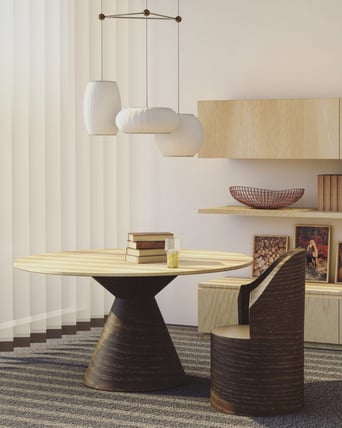When a developer decides to embark on a new subdivision of homes, they often choose to build a model home. The purpose of this home is to give prospective buyers an idea of what their home will look like. Many developers use production builders to construct their developments because they are good at constructing many homes and have the staff and know-how to get it all done. Production builders typically offer a few options for floorplans and features, so a model home gives buyers a starting point.
There are several important factors when constructing a model home. Staging. Location within the development. How tours should be conducted. Whether or not you should use it as an office space, and how to best make use of the property. In this model home series, we will take a deep dive into all of these topics and discuss the importance of each item.
Staging
Interior design and staging of your model home is vital to procuring sales in your development. You want to not only give buyers an idea of the layout their home might have, but also show them how beautiful it can be once they’re moved in. You want them to feel comfortable, but also create a space that’s eye catching and allows the customer to design their own space in their head. When a customer can envision themselves in the home, they may be more inclined to purchase.
Location Within the Development
The location of your model home within your project development will depend on the size of the planned project. If it’s a small development, with 50 houses or less, the model should be located at the front of the property where it’s easily visible. If your project is planned to be larger than that and built over several years in different phases, your model home will move. When a phase is complete and you’re starting the next phase, having the model home placed at the entrance of the new phase is best. This is especially important if your phases will have homes with differing layouts. Offering a model home with the updated designs and floorplans helps customers visualize their property.
Tours
Showing a model home the proper way is crucial. There are certain ways to describe features of a home, certain ways to talk about varying layouts and design features. Whether you’re doing an in-person tour or a virtual tour will change a few things in wording and staging, so be sure to stay tuned for the in-depth article describing the ins and outs of these processes.
The physical features of your model home are a key piece in attracting a buyer’s attention. Choosing the right color palette and décor, placing furniture in a way to maximize use of the space and proper lighting are all important. Your best bet for determining these pieces is to research what local buyers are looking for. Are you in an upscale area where high-end furniture and décor is sought after? Are you in a lower-income area where budget is more important than brand name? Understanding the demographics of the area will tell you the type of buyer you are going to attract. Playing to their specific tastes is what will get their attention.
Just like buying a car, the model home allows the customer to “test drive” the property and see what their home could potentially look like. The more you cater to what buyers are looking for, the more likely you are to land the sale. Know your customer first, then build and furnish the model home.

Recent Posts
- Spec Home Loans: Complete Guide to Construction Financing for Builders
- Spec Construction Loans: A Spec Line of Credit Is Worth the Paperwork
- Spec Homes and Pre-Sale Homes: Relative Benefits for a Spec Builder
- Spec Construction Success: Insights for the Investor Builder
- How Is a Spec House Different From Other Kinds of House Construction?
